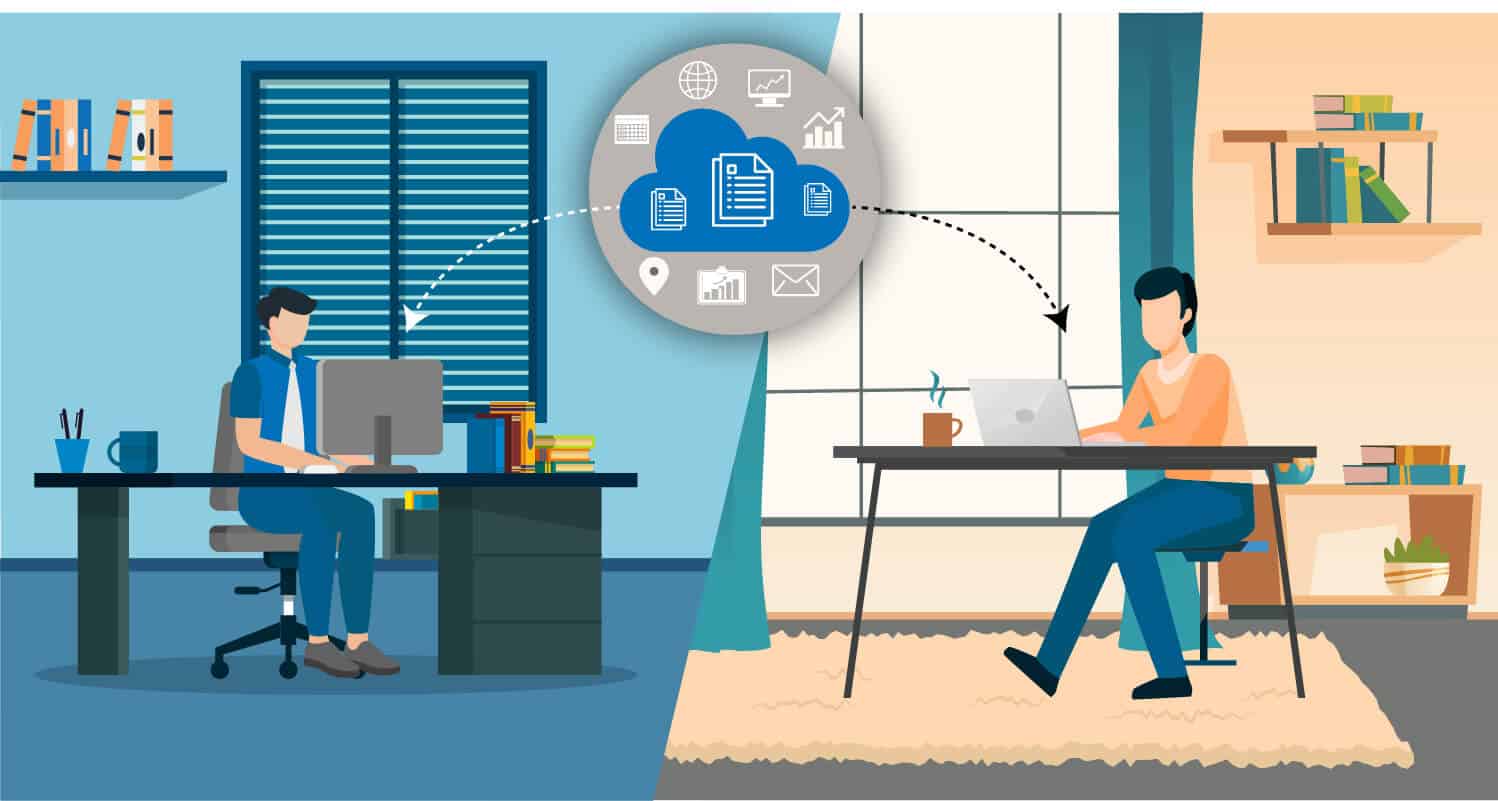Traditional network security controls are no longer effective.
Why Hybrid Work is Effective?

Employees who have the option of working both in an office and from home report higher levels of engagement, productivity, and well-being.
Hybrid work is here to stay, whether corporations like it or not, and employees like it. And, believe it or not, the model is effective. According to research, hybrid workers — those who work partly in an office and partially from home — are more productive and engaged than individuals who work totally in an office or entirely from home. They also report improved physical and emotional well-being, as well as a more favorable attitude about their organization.
Despite the facts and obvious benefits that hybrid work can provide, many businesses are still debating whether and how to implement it. Some business leaders believe that meaningful work cannot be done away from the office. However, if done correctly, flexible work models can result in a more productive and healthy workforce.
Gain insights into the effectiveness of hybrid work and how it can benefit your business by registering at Citrix Certification Training Course.
More Productive
According to Work Rebalanced, a Citrix poll of 900 business leaders and 1,800 knowledge workers worldwide, 69% of hybrid workers are productive, compared to 64% of remote workers and 59 percent of in-office employees. Further,
- Compared to 56% of remote workers and 51% of in-office employees, 69% of hybrid workers are engaged.
- Compared to 69% of remote workers and 65% of in-office employees, 73% of hybrid workers are satisfied with their performance.
More Connected
Hybrid workers are also more positive about their careers and companies than their counterparts.
- Compared to 63% of in-office employees and 60% of remote workers, 71% of hybrid workers believe they have a strong emotional connection to their team and close coworkers, which inspires them to perform more.
- Compared to 60% of remote workers and 58% of in-office employees, 70% of hybrid workers believe they have a strong emotional connection to their company and leadership team.
- Compared to 60% of remote workers and 56% of in-office employees, 69% of hybrid workers would recommend their employer.
More Balanced
The pandemic has changed the way people work and increased stress to record levels. But one thing is universal: when workers are happy at work, they can reach their full potential, work purposefully and creatively, and contribute meaningfully to the overall success of the company. Hybrid workers again lead the way in this category, with 70% of those who participated in Work Rebalanced expressing positive wellbeing, compared to 61% of remote workers and 60% of in-office employees.
Assisted by Technology
When it comes to allowing hybrid work, technology is a critical success factor. Employees want access to technologies that enable them to work where and how they want to be most effective. And they expect it from their employers.
It is important to remove the noise and distractions that technology might cause at work. According to Work Rebalanced, the average employee spends approximately 54 minutes each day dealing with technological issues. For example, the average employee must manage four or more programs just to complete a single business transaction, and accessing them necessitates knowing various passwords and navigating a slew of different interfaces.
It’s annoying and slowing them down. However, with the appropriate solutions, IT directors may simplify and streamline work technology to provide employees the space they need for “deep work” and concentration.
The Hybrid Work Stack
Many organizations are already making efforts in this direction, utilizing digital workspace solutions that allow them to:
- Unify work: Employees have constant and dependable access to all the resources they need to be productive whether at home, on the go, or in the office, in terms of work channel, device, or location.
- Secure work: Contextual access and app security ensure that applications and data stay secure – no matter where work takes place.
- Simplify work: Machine learning, virtual assistants, and simplified workflows personalize, guide, and automate the work experience, allowing people to work free of distractions and perform at their best.
When it comes to work tech infrastructure, IT departments are now much more focused on truly understanding and addressing employee needs with the work technology that they supply, and they are taking a more employee-led, design-thinking approach.
And the change is paying off, particularly for hybrid employees. According to Work Rebalanced, hybrid workers are more empowered by their work technology, with 68% stating it allows them to function efficiently, compared to 65% of remote workers and 60% of in-office employees.
Work in the Future
The future of work is hybrid work. And, as Work Rebalanced demonstrates, it has the potential to produce large, good benefits for both employees and companies. Employees will prosper if they are given an opportunity, trust, and power to work where and how they choose. Companies who grant it will see their creativity and growth accelerate.
Learn why hybrid work is essential for success in the modern workplace by participating in Citrix Certification Training Course.
Here at CourseMonster, we know how hard it may be to find the right time and funds for training. We provide effective training programs that enable you to select the training option that best meets the demands of your company.
For more information, please get in touch with one of our course advisers today or contact us at training@coursemonster.com
